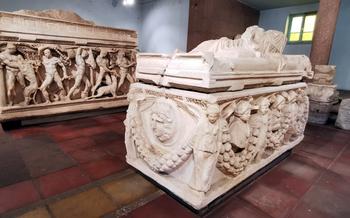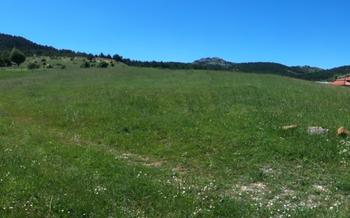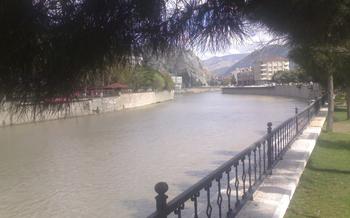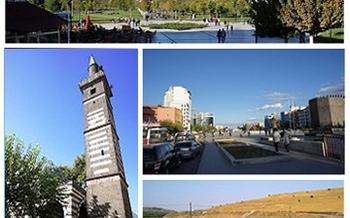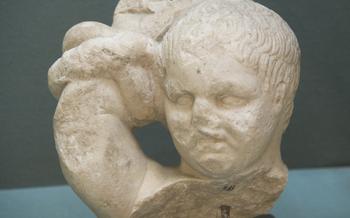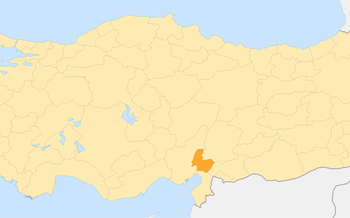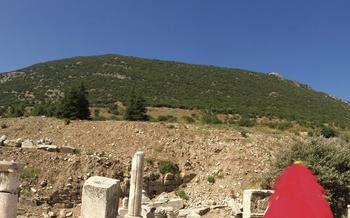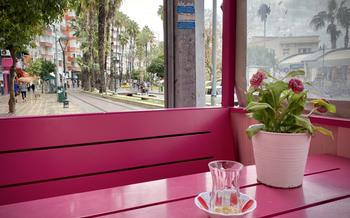
Osmaniye Archeology Museum
- Osmaniye Archeology Museum: A Journey Through History and Culture
- Unveiling the Past: The Museum's Collections
- Exploring the Neolithic Period: A Glimpse into Early Human Life
- Chalcolithic Treasures: A Legacy of Craftsmanship
- Bronze Age Splendors: Unveiling Ancient Civilizations
- Iron Age Artifacts: A Testament to Technological Advancements
- Hellenistic and Roman Influences: A Crossroads of Civilizations
- Byzantine Legacy: Preserving Christian Heritage
- Islamic Heritage: A Tapestry of Art and Architecture
- Ethnographic Treasures: Celebrating Local Traditions
- Temporary Exhibitions: A Dynamic Showcase of Art and Culture
- Educational Programs and Workshops: Engaging the Community
- Accessibility and Visitor Services: Ensuring a Welcoming Experience
- Insider Tip: Unveiling Hidden Gems
Osmaniye Archeology Museum: A Journey Through History and Culture
The Osmaniye Archeology Museum stands as a testament to the rich cultural heritage of the Osmaniye region, inviting visitors to embark on a captivating journey through the annals of time. Established in 1976, the museum has become a treasure trove of artifacts and exhibits that shed light on the diverse civilizations that have flourished in this part of Turkey. Strategically located in the city of Osmaniye, the museum is easily accessible, making it a must-visit destination for history buffs, culture enthusiasts, and anyone seeking to delve into the region's captivating past. The museum's significance extends beyond its collection; it serves as a vital center for preserving, studying, and promoting the cultural heritage of Osmaniye, fostering a sense of pride and connection among the local community.
The architectural style of the museum reflects a blend of modern functionality and traditional aesthetics, creating a welcoming and inviting space for visitors. Its spacious galleries and well-organized exhibits allow for easy navigation and a comprehensive exploration of the region's rich history. As you step through the doors of the Osmaniye Archeology Museum, prepare to be captivated by the timeless stories and invaluable treasures that await you within its walls.
Unveiling the Past: The Museum's Collections
The Osmaniye Archeology Museum boasts a diverse range of artifacts and exhibits that offer a captivating glimpse into the region's rich past. From prehistoric tools to intricate jewelry, from Bronze Age weapons to Byzantine mosaics, the museum's collection is a testament to the cultural diversity and historical significance of Osmaniye.
Among the highlights of the collection are unique pieces that showcase the artistry and craftsmanship of ancient civilizations. A stunning gold necklace with intricate beadwork and delicate pendants is a testament to the skill of Neolithic artisans. A Chalcolithic pottery vessel adorned with intricate geometric patterns offers a glimpse into the sophisticated artistic expressions of the period.
The museum's collection also provides valuable insights into the daily lives of ancient people. Neolithic tools and implements shed light on the subsistence strategies and technological advancements of early human settlements. Bronze Age weapons and armor offer a glimpse into the conflicts and warfare that shaped societies of the time.
Interactive displays throughout the museum enhance the visitor experience, providing an immersive and engaging way to learn about the region's history and culture. Touchscreens, multimedia presentations, and hands-on exhibits allow visitors to explore artifacts in greater detail, making the museum a dynamic and interactive learning environment.
Exploring the Neolithic Period: A Glimpse into Early Human Life
The Osmaniye Archeology Museum houses a significant collection of artifacts from the Neolithic period, offering a glimpse into the lives of early human settlers in the region. These artifacts provide valuable insights into their daily routines, customs, and technological advancements.
Among the most fascinating exhibits are tools and weapons crafted from stone, bone, and antler. These tools were essential for hunting, gathering, and crafting other objects. Visitors can also admire a variety of pottery vessels, which provide evidence of early ceramic production and the storage of food and liquids.
The museum's collection also includes numerous figurines and other decorative objects, which shed light on the artistic expressions and beliefs of Neolithic people. These artifacts hint at the emergence of religious practices and the development of symbolic thought.
By studying the artifacts from the Neolithic period, visitors to the Osmaniye Archeology Museum can gain a deeper understanding of the origins of human civilization and the remarkable ingenuity and adaptability of our ancestors.
Chalcolithic Treasures: A Legacy of Craftsmanship
The Chalcolithic period, a transitional phase between the Neolithic and Bronze Ages, left behind a remarkable legacy of craftsmanship and intricate artistry in Osmaniye. The museum houses an impressive collection of Chalcolithic artifacts that showcase the region's rich cultural heritage during this era.
Exquisite jewelry, adorned with semi-precious stones and intricate designs, reflects the skill and artistry of ancient craftsmen. These pieces, often used as personal adornments or symbols of status, hint at the evolving social structures of the time.
Alongside jewelry, the museum displays an array of ceramic vessels, adorned with intricate patterns and vibrant colors. These pottery pieces, both functional and decorative, provide a glimpse into the daily lives and culinary practices of Chalcolithic communities.
Furthermore, the collection includes a variety of tools and weapons crafted from copper, the defining material of this period. These artifacts, which exhibit advanced metalworking techniques, reveal the region's role in the development of metallurgy and its impact on technological advancements.
The Chalcolithic period in Osmaniye was marked by cultural exchange and influences from neighboring regions. The presence of imported artifacts, such as pottery from distant lands, suggests a vibrant trade network that facilitated the spread of ideas and innovations.
Exploring the Chalcolithic collection at the Osmaniye Archeology Museum offers visitors a glimpse into the region's rich craftsmanship, technological advancements, and cultural interactions during this pivotal period of human history.
Bronze Age Splendors: Unveiling Ancient Civilizations
The Osmaniye Archaeology Museum proudly houses a remarkable collection of Bronze Age artifacts that offer a captivating glimpse into the lives of ancient civilizations. Weapons, tools, and household objects from various settlements tell a story of innovation, craftsmanship, and cultural exchange. The Bronze Age marked a significant turning point in human history, and the museum's collection provides valuable insights into the social and economic structures that shaped this era. From intricate bronze tools that revolutionized agriculture and warfare to exquisite jewelry and decorative items, the exhibits showcase the artistic expressions and cultural practices of the Bronze Age inhabitants. Visitors can marvel at the ingenuity and artistry of these ancient civilizations, gaining a deeper appreciation for their contributions to our shared cultural heritage.
Iron Age Artifacts: A Testament to Technological Advancements
The Osmaniye Archaeology Museum proudly displays a remarkable collection of Iron Age artifacts that bear witness to the region's technological advancements during this transformative period. Iron tools and weapons, crafted with precision and ingenuity, revolutionized warfare and agriculture, allowing societies to expand and flourish. These artifacts, including swords, spears, and arrowheads, provide tangible evidence of the region's military might and prowess.
The transition to an iron-based economy and society brought about profound changes. Iron tools, such as axes, hoes, and sickles, enabled farmers to cultivate land more efficiently, leading to increased agricultural productivity. This, in turn, supported a growing population and facilitated the rise of urban centers.
The Iron Age also witnessed significant cultural developments. Artistic representations and religious artifacts from this period offer glimpses into the beliefs and practices of the region's inhabitants. Decorative items, such as jewelry, pottery, and sculptures, showcase the region's rich artistic traditions and influences from neighboring civilizations.
Exploring the Iron Age collection at the Osmaniye Archaeology Museum is a journey through a period of technological innovation, societal transformation, and cultural expression. These artifacts provide valuable insights into the region's past and its role in shaping the broader narrative of human history.
Hellenistic and Roman Influences: A Crossroads of Civilizations
The Osmaniye Archaeology Museum houses a rich collection of artifacts that reflect the region's interactions with Hellenistic and Roman civilizations. Sculptures, coins, and pottery from these periods offer a glimpse into the cultural exchange and assimilation that took place in the region. Visitors can admire the intricate carvings of Hellenistic sculptures, depicting deities and mythological figures, as well as the finely crafted coins that were used for trade and commerce. The museum also displays examples of Roman pottery, which showcase the region's adoption of Roman customs and traditions. These artifacts provide valuable insights into the impact of the Roman Empire on the region, demonstrating the region's position as a crossroads of civilizations and a meeting point of diverse cultures.
Byzantine Legacy: Preserving Christian Heritage
The Osmaniye Archeology Museum houses a significant collection of Byzantine artifacts, offering a glimpse into the region's rich Christian heritage. Mosaics, frescoes, and other religious objects showcase the artistic and cultural influences of the Byzantine Empire. Visitors can admire the intricate craftsmanship and symbolism of these artifacts, gaining insights into the spread of Christianity and the Byzantine Empire's impact on the region. The museum's Byzantine collection provides a deeper understanding of the region's role in the Byzantine world and its cultural heritage.
Islamic Heritage: A Tapestry of Art and Architecture
The Osmaniye Archaeology Museum proudly showcases the rich Islamic heritage of the region, offering visitors a glimpse into the cultural and artistic achievements of the Seljuk and Ottoman periods. Exquisite Islamic pottery, intricate calligraphy, and decorative arts adorn the museum's halls, showcasing the region's contributions to Islamic art and design. Visitors can admire the delicate patterns and vibrant colors of ceramic tiles, marvel at the precision and beauty of Islamic calligraphy, and appreciate the intricately carved wooden and stone artifacts that reflect the region's Islamic architectural heritage. This section of the museum offers a fascinating exploration of the region's Islamic past and its enduring impact on the region's cultural identity.
Ethnographic Treasures: Celebrating Local Traditions
The Osmaniye Archeology Museum houses a remarkable collection of ethnographic artifacts that showcase the rich cultural heritage and traditions of the Osmaniye region. These exhibits provide a glimpse into the daily lives, customs, and craftsmanship of the local people throughout history.
Traditional costumes, adorned with intricate embroidery and vibrant colors, tell stories of the region's diverse ethnic groups. Handicrafts, such as woven rugs, pottery, and metalwork, display the exceptional skills and artistry of local artisans. Everyday objects, like agricultural tools, cooking utensils, and household items, offer insights into the practical aspects of life in the Osmaniye region.
By preserving and showcasing these ethnographic treasures, the museum plays a crucial role in celebrating the unique cultural identity of the region. Visitors can gain a deeper appreciation for the traditions, customs, and heritage that have shaped the lives of the local people.
Insider Tip:
To fully immerse yourself in the ethnographic collection, be sure to take your time exploring the exhibits. Look for the stories behind the artifacts, and imagine the hands that crafted them and the lives they touched. Engage with the museum staff, who can provide insights and recommendations, helping you discover hidden gems and gain a richer understanding of the region's cultural heritage.
Temporary Exhibitions: A Dynamic Showcase of Art and Culture
Complementing its permanent collection, the Osmaniye Archeology Museum hosts a vibrant program of temporary exhibitions that showcase a diverse range of art and cultural expressions. These exhibitions provide a dynamic platform for contemporary artists, historical artifacts, and special collections to engage with the public.
Through collaborations with local artists and institutions, the museum presents thought-provoking exhibitions that explore various themes, artistic movements, and cultural traditions. These exhibitions offer fresh perspectives, promote cultural exchange and dialogue, and provide visitors with unique and immersive experiences.
Temporary exhibitions at the Osmaniye Archeology Museum serve as a bridge between the past and present, allowing visitors to appreciate the continuity and evolution of artistic expression. They encourage visitors to engage with contemporary interpretations of history, challenge their perceptions, and discover new dimensions of the region's cultural heritage.
Whether it's a showcase of modern art installations, a retrospective of a renowned artist, or a thematic exhibition exploring a specific historical period, the museum's temporary exhibitions add a dynamic and ever-changing dimension to the visitor experience.
Educational Programs and Workshops: Engaging the Community
The Osmaniye Archeology Museum recognizes the importance of education and community engagement. It offers a range of educational programs and workshops designed to foster cultural awareness, appreciation, and understanding. These programs are tailored to diverse audiences, including students, families, and the general public.
Interactive workshops provide hands-on experiences, allowing participants to engage with artifacts, learn about archaeological techniques, and explore the museum's collection in a dynamic and engaging way. Lectures by experts and scholars offer in-depth insights into the history, culture, and significance of the region's archaeological heritage.
Educational programs extend beyond the museum walls, reaching out to schools and community centers. Through outreach programs, museum educators bring the wonders of archaeology to students, fostering their curiosity and appreciation for their cultural heritage. These initiatives promote the museum as a vibrant hub for learning, encouraging community members to actively participate in preserving and celebrating their shared history.
Accessibility and Visitor Services: Ensuring a Welcoming Experience
At the Osmaniye Archeology Museum, accessibility and visitor services are prioritized to ensure a welcoming and inclusive experience for all. The museum is wheelchair accessible, with ramps and elevators providing easy navigation throughout the galleries. Multilingual signage and audio guides are available for international visitors, allowing them to explore the museum's collection in their preferred language. Guided tours and educational programs are offered for groups, providing an in-depth understanding of the museum's artifacts and their historical significance. The museum staff is friendly and knowledgeable, always ready to assist visitors with any questions or requests. With its commitment to accessibility and visitor services, the Osmaniye Archeology Museum strives to create an environment where everyone can engage with and appreciate the region's rich cultural heritage.
Insider Tip: Unveiling Hidden Gems
Beyond the main galleries, the Osmaniye Archeology Museum holds hidden treasures waiting to be discovered. Venture into the museum's nooks and crannies to uncover unique artifacts and stories that may not be immediately noticeable. Engage with the knowledgeable museum staff, who can provide personalized recommendations and guide you towards lesser-known exhibits. Take your time to explore these hidden gems, immersing yourself in the museum's rich collection and gaining a deeper understanding of the region's cultural heritage. This insider tip will transform your visit into an unforgettable journey of discovery and enlightenment.
